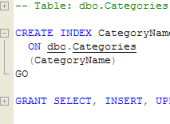MS SQL Maestro online Help
| Prev | Return to chapter overview | Next |
Create User Wizard
Create User Wizard guides you through the process of creating a new database user. See How To Create User to learn how to run the wizard.
The basic principles of Create Object Wizards in MS SQL Maestro are explained in a separate topic. Below you will find a description of wizard steps that are unique for the current object.
Specify the Name by which the user is identified inside this database.
Note: the name of the object must be unique among all the object names in its container. Moreover, all the objects that are source of data need unique names among themselves. You can use any identifier that is allowed by Microsoft SQL server.
Comment
This field stores a comment to the user.
Type
Indicates the user type. Possible variants are: for login, certificate and asymmetric key. Indicates the respective database object type for which the database user is being created.
Login
For the login user type only. Specifies the SQL Server login for which the database user is being created.
Default Schema
For the login user type only. Specifies the first schema that will be searched by the server when it resolves the names of objects for this database user.
Certificate
For the certificate user type only. Specifies the certificate for which the database user is being created.
Asymmetric key
For the asymmetric key user type only. Specifies the asymmetric key for which the database user is being created.
See also: User Editor
| Prev | Return to chapter overview | Next |





 Download
Download Buy
Buy
